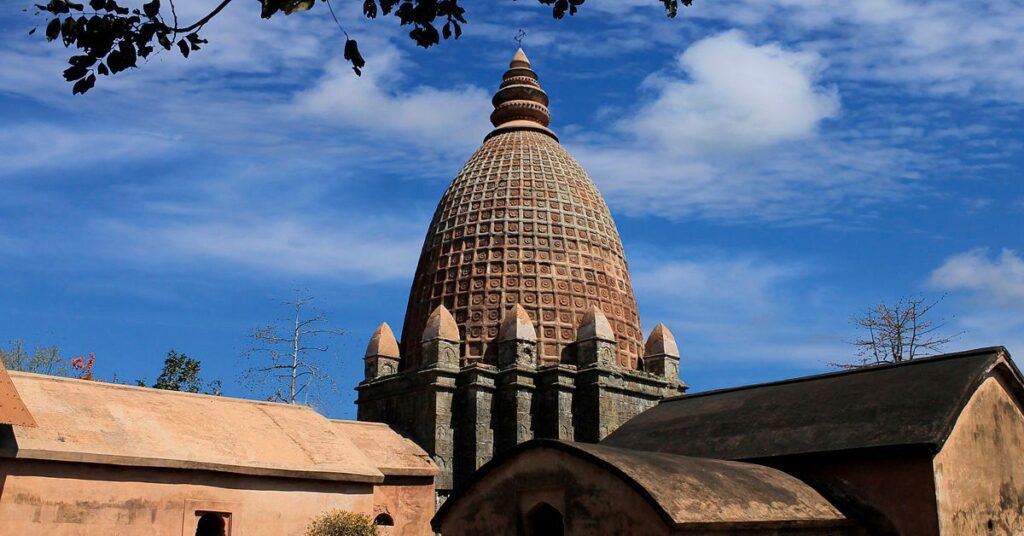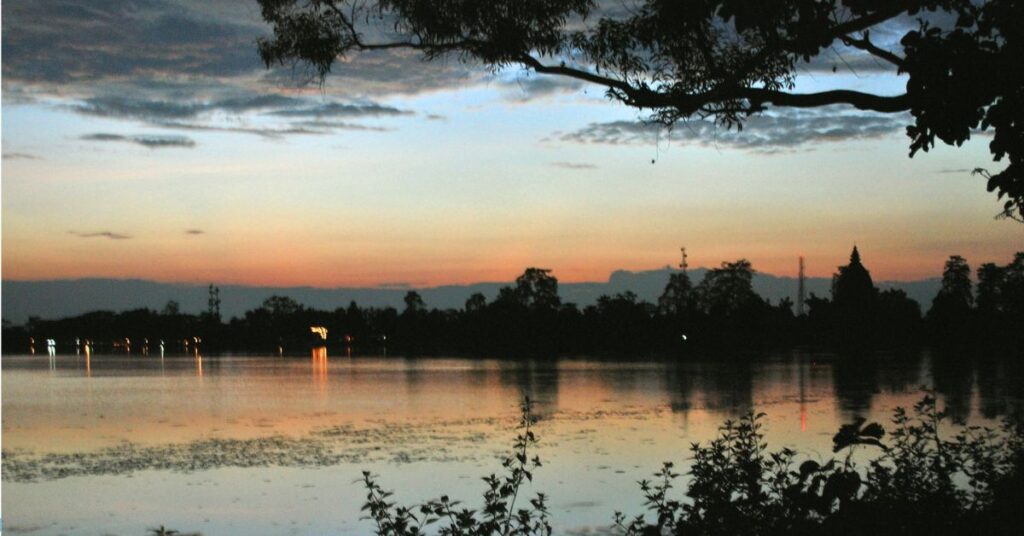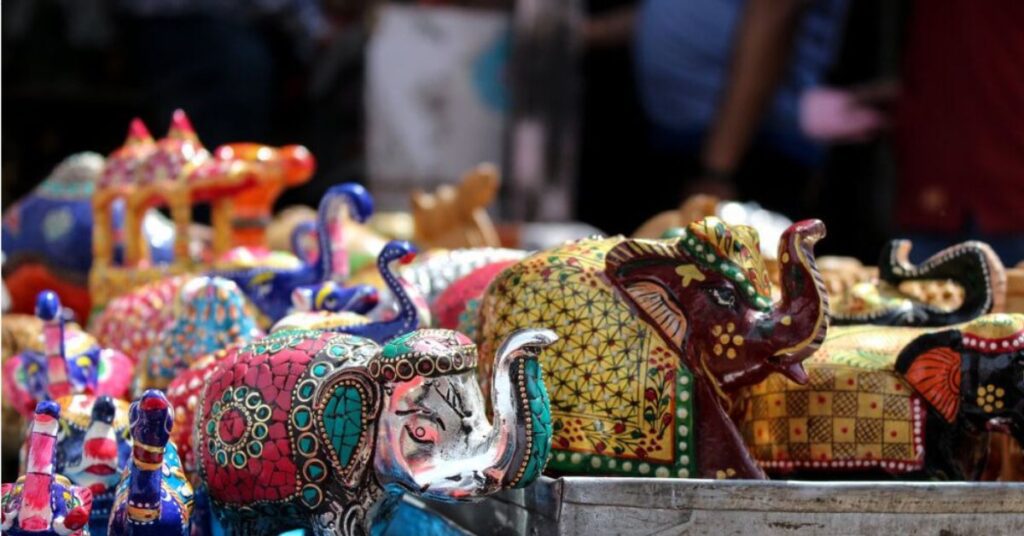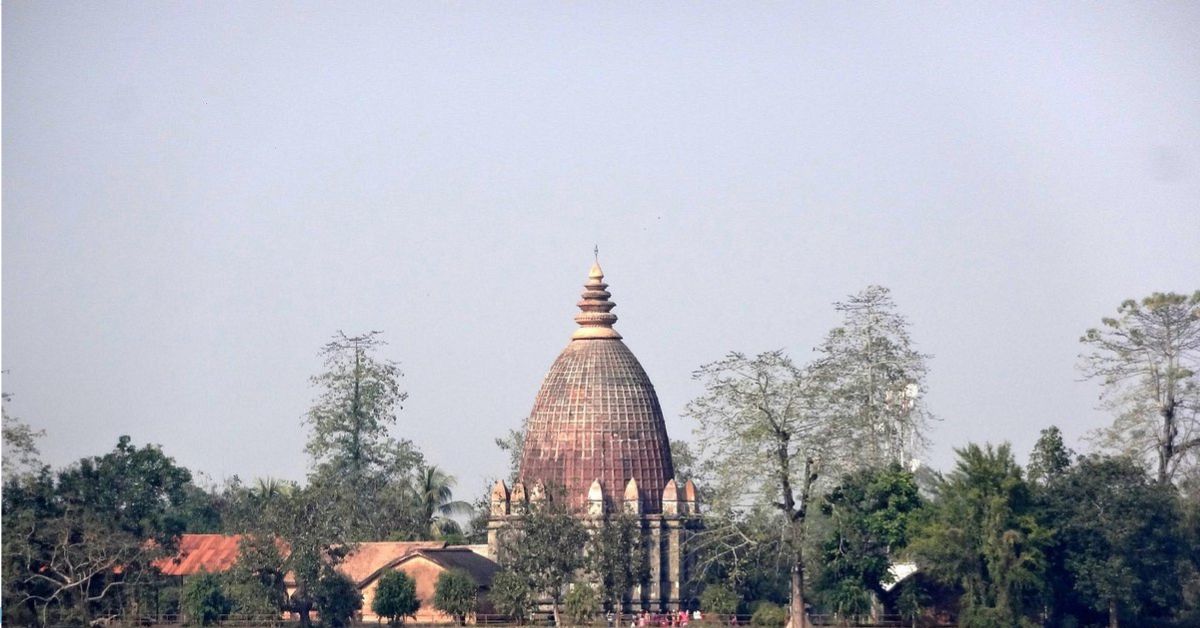Nestled amidst Assam’s tranquil landscapes, Joysagar Tank stands as a testament to the Ahom dynasty’s architectural prowess and cultural legacy. This ancient, man-made reservoir near Sivasagar is more than just a water body; it’s a symbol of royal grandeur and engineering marvel. Built by King Rudra Singha in the 18th century, Joysagar is adorned with exquisite temples and surrounded by lush greenery, inviting visitors on a journey through time. The tank’s serene waters, reflecting the sky, and the intricately carved structures along its banks whisper tales of bygone eras. A visit to Joysagar is a must for history enthusiasts and culture seekers eager to explore Assam’s rich past.
How to reach:
By Air
The nearest airport is Jorhat Airport, approximately 55 kilometers from Joysagar Tank. Taxis or public transportation can be used to reach the tank from the airport.
By Train
Sivasagar Town Railway Station is the nearest railhead, well-connected to major cities. Joysagar Tank is about 6 kilometers from the station, easily accessible by taxi or auto-rickshaw.
By Road
- From Guwahati: A drive of approximately 7-8 hours on NH27 and NH715 leads to Joysagar Tank.
- From Jorhat: Joysagar Tank is a 1.5-hour drive away via AH1.
- Local Transport: Taxis, auto-rickshaws, and buses are available from Sivasagar and other nearby towns. Private vehicles can also be hired.
Best time to visit:
Winter (November to February)
Winter is the peak tourist season in Joysagar due to pleasant weather with temperatures ranging from 10°C to 25°C. Sunny days make it ideal for exploring the area. The region also comes alive with the festive spirit of Magh Bihu in January. Nearby wildlife sanctuaries, like Kaziranga, are easily accessible for exciting safaris.
Spring (March to May)
Spring brings warmer temperatures, ranging from 15°C to 30°C. The landscape bursts with colorful blooms, making it a delightful time for nature lovers. Birdwatchers can also spot migratory birds.
Monsoon (June to September)
Heavy rainfall characterizes the monsoon season, making travel challenging due to wet conditions. While the region looks lush and green, outdoor activities might be limited.
Post-Monsoon (October to November)
The weather clears up after the monsoon, with temperatures ranging from 20°C to 30°C. This period offers a good balance of pleasant weather and cultural experiences, as it coincides with festivals like Durga Puja and Diwali.
Attractions:
Joy Dol:

Joy Dol, a revered site nestled in Assam, stands as a captivating testament to the region’s rich cultural and religious tapestry. Also known as Joydol or Joysagar Tank, this historic marvel is renowned for its architectural grandeur and historical significance.
Constructed during the reign of the illustrious Ahom King Rudra Singha in the 18th century, Joy Dol is a masterpiece of intricate craftsmanship and design, reflecting the opulence of the Ahom dynasty. Its distinctive dome and elaborate carvings serve as a focal point for both devotees seeking spiritual solace and history enthusiasts captivated by its architectural brilliance.
Sunset Views at Joysagar Tank:

Joysagar Tank is a vast, man-made reservoir built by King Rudra Singha in the 18th century. Covering 120 acres, it’s the largest of its kind in Assam. The tank’s still waters mirror the sky, creating a picturesque scene. Visitors can enjoy leisurely walks around its banks or boat rides across its surface. Beyond its historical significance, Joysagar Tank offers a peaceful retreat surrounded by greenery, showcasing the natural beauty and architectural heritage of Assam.
Local Markets and Handicrafts:

The area around Joysagar Tank is home to bustling local markets that offer a vibrant glimpse into Assamese life and culture. These markets are a treasure trove of handicrafts, traditional Assamese attire like Muga silk sarees, and delicious local delicacies. Visitors can interact with local artisans, witnessing their craftsmanship firsthand, and savor authentic Assamese cuisine. Beyond their commercial role, these markets are cultural hubs where traditions are preserved and celebrated, enhancing the overall charm of Joysagar Tank and its surroundings.
Local Experiences:
Explore Ahom Architecture: Immerse yourself in history by visiting Rang Ghar, Talatal Ghar, and Kareng Ghar to admire the unique Ahom architectural style.
Experience Festivals: Witness the vibrant celebrations of festivals like Durga Puja at Devi Ghar and other nearby temples to immerse in Assam’s rich cultural traditions.
Boat Safari: Enjoy a peaceful boat ride on Joysagar Tank, taking in the panoramic views and tranquil surroundings.
Explore Local Markets: Discover the vibrant local markets offering handicrafts, traditional Assamese attire, and delicious local delicacies.
Immerse in Culture: Experience the region’s artistic heritage through traditional Assamese dance, music, and theater performances.
Savor Local Cuisine: Indulge in authentic Assamese flavors with dishes like Assam tea, pithas, and flavorful fish curries.
Village Life: Take guided tours or leisurely walks through nearby villages to interact with locals and experience their daily life.
Birdwatching: Explore the natural habitats around Joysagar Tank for birdwatching opportunities, spotting species like hornbills and migratory birds.
Capture Memories: Capture the architectural marvels, scenic landscapes, and vibrant cultural scenes through photography.
Learn Traditional Crafts: Participate in workshops on pottery and weaving to gain hands-on experience from local artisans.
Travel tips:
Local Guidance: Consider hiring a local guide to gain deeper insights into the history, architecture, and cultural significance of Joysagar Tank and its surroundings.
What to Wear: Pack lightweight and comfortable clothing. Don’t forget a hat, sunglasses, and sunscreen for sun protection. Wear sturdy walking shoes for exploring historical sites.
Photography: Capture the beauty of Joysagar Tank, but respect local customs and regulations, especially at religious sites.
Cultural Sensitivity: Dress modestly and respectfully when visiting temples and cultural sites. Remove shoes before entering religious structures.
Safety First: Exercise caution near water bodies like Joysagar Tank and follow safety guidelines during boat rides. Avoid venturing into restricted areas.
Local Cuisine: Explore local eateries to savor authentic Assamese cuisine, including Assam tea, pithas, and fish curries.
Health and Wellness: Carry necessary medications and stay hydrated. Seek medical assistance if needed.
Communication: While English and Hindi are understood, learning basic Assamese phrases can enhance your interactions.
Support Local Artisans: Purchase handicrafts and souvenirs from local markets to support the community.
Environmental Responsibility: Respect the natural environment by avoiding litter and following eco-friendly practices.
Conclusion
A visit to Joysagar Tank in Assam is a journey through history, culture, and nature. The grandeur of structures like Rang Ghar and Talatal Ghar, along with the serene spirituality of Joy Dol and Devi Ghar, offer a glimpse into the rich legacy of the Ahom dynasty. The vast Joysagar Tank, a tranquil expanse mirroring the sky, provides a peaceful escape amidst lush greenery. Immerse yourself in the region’s vibrant culture through festivals, local markets, and authentic Assamese cuisine. Whether exploring by boat or experiencing village life, Joysagar Tank offers a unique blend of history, spirituality, and natural beauty that creates a lasting impression. Discover more about planning your unforgettable journey at Xplro.com.
FAQs
Where is Joysagar Tank located?
- Joysagar Tank is situated near Sivasagar town in the Sivasagar district of Assam, India, approximately [distance] from [nearest major city/landmark].
What is the historical significance of Joysagar Tank?
- Joysagar Tank holds significant historical importance as it was constructed in the 18th century by Swargadeo Rudra Singha of the Ahom dynasty. It served as a large man-made reservoir for irrigation and as a recreational site for royalty.
What are the main attractions at Joysagar Tank?
- The main attractions include Rang Ghar (amphitheater), Talatal Ghar (palace complex), Kareng Ghar (royal palace), Joy Dol (temple), and Devi Ghar (temple dedicated to Goddess Durga), showcasing Ahom architecture and cultural heritage.
What is the best time to visit Joysagar Tank?
- The best time to visit Joysagar Tank is during the winter months, from November to February, when the weather is pleasant and ideal for sightseeing and outdoor activities.
How can I reach Joysagar Tank?
- You can reach the Tank by air via Jorhat Airport (approximately [distance] away) or by train to Sivasagar Town Railway Station ([distance] away). From there, taxis, auto-rickshaws, or private vehicles are available to reach the tank.
What are the entry timings and fees for Joysagar Tank?
- Joysagar Tank is generally open from [specific timings]. Entry fees are [fee details], with concessions for children, students, and senior citizens.
Are guided tours available at Joysagar Tank?
- Yes, guided tours led by experienced local guides are available at Joysagar Tank. These tours provide insights into the history, architecture, and cultural significance of the tank and its surrounding attractions.
What should I wear when visiting Joysagar Tank?
- Wear lightweight and comfortable clothing suitable for the season. Modest attire is recommended when visiting temples and religious sites. Comfortable walking shoes are advisable for exploring historical structures.
Are accommodations available near Joysagar Tank?
- Yes, accommodations such as hotels, guesthouses, and lodges are available in Sivasagar town and nearby areas. It’s advisable to book in advance, especially during peak tourist seasons.
What are the nearby attractions to visit along with Joysagar Tank?
- Nearby attractions include Rang Ghar, Talatal Ghar, Kareng Ghar, Joy Dol, Devi Ghar, and other historical and cultural sites in and around Sivasagar district.
Is it safe to visit Joysagar Tank?
- Yes, Joysagar Tank and its surroundings are generally safe for visitors. However, it’s advisable to follow local guidelines, respect cultural norms, and take necessary precautions while exploring the area.
Can I take photographs at Joysagar Tank?
- Yes, photography is permitted at Joysagar Tank and its attractions. However, be mindful of local regulations, especially at religious sites where photography may be restricted inside temples.






